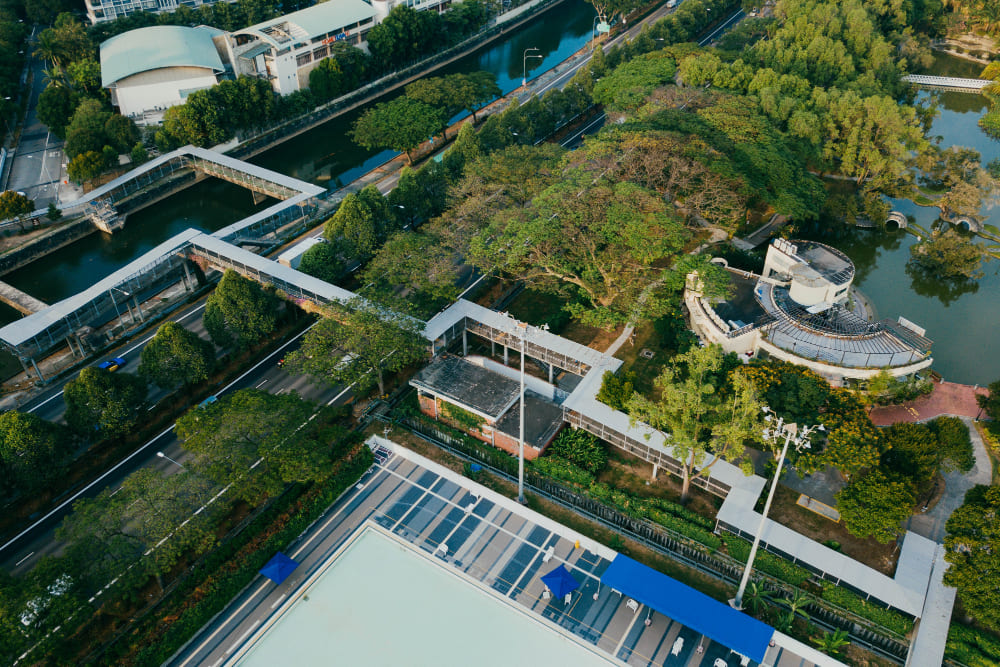Sustainable Master Planning for Climate-Resilient Communities

As climate change continues to pose significant challenges to urban development across Nigeria and West Africa, the need for sustainable master planning approaches that build climate resilience has never been more critical. Traditional planning methods must evolve to address the complex interplay between urban growth, environmental sustainability, and climate adaptation.
Understanding Climate Resilience in Urban Planning
Climate resilience refers to the ability of urban systems to anticipate, prepare for, respond to, and recover from climate-related disruptions while maintaining essential functions and adapting to changing conditions. In the context of master planning, this means designing communities that can withstand and adapt to climate impacts such as flooding, extreme heat, drought, and sea-level rise.
Key Principles of Climate-Resilient Planning
- Integration of climate risk assessment into planning processes
- Nature-based solutions and green infrastructure
- Adaptive and flexible design approaches
- Community engagement and social resilience
- Multi-hazard risk reduction strategies
- Sustainable resource management
Climate Challenges in West African Cities
West African cities face unique climate challenges that must be addressed through comprehensive master planning approaches. These challenges include increasing temperatures, changing precipitation patterns, coastal erosion, and extreme weather events that threaten urban infrastructure and communities.
Flooding and Water Management
Many West African cities experience severe flooding during rainy seasons, exacerbated by inadequate drainage systems, unplanned development, and changing precipitation patterns. Sustainable master planning must prioritize integrated water management systems that can handle increased rainfall while protecting communities from flood risks.
Urban Heat Island Effects
Rapid urbanization and the prevalence of concrete surfaces contribute to urban heat island effects, making cities significantly warmer than surrounding areas. This poses health risks and increases energy consumption for cooling. Climate-resilient planning must incorporate strategies to reduce urban temperatures through green spaces, reflective surfaces, and improved building design.
Sustainable Planning Strategies
Effective climate-resilient master planning requires the integration of multiple strategies that address both mitigation and adaptation needs. These strategies must be tailored to local contexts while incorporating global best practices and emerging technologies.
Green Infrastructure and Nature-Based Solutions
Green infrastructure provides multiple benefits for climate resilience, including stormwater management, air quality improvement, temperature regulation, and biodiversity conservation. Examples include urban forests, green corridors, constructed wetlands, and permeable surfaces that can be integrated into master plans.
Mixed-Use and Compact Development
Promoting mixed-use, compact development patterns reduces transportation needs, preserves natural areas, and creates more efficient infrastructure systems. This approach supports both climate mitigation through reduced emissions and adaptation through more resilient urban forms.
Renewable Energy Integration
Master plans should incorporate renewable energy systems, including solar, wind, and biomass technologies, to reduce greenhouse gas emissions and increase energy security. This includes planning for distributed energy systems, energy storage, and smart grid infrastructure.
"Climate-resilient master planning is not just about protecting communities from climate impacts; it's about creating thriving, sustainable urban environments that can adapt and flourish in the face of changing conditions."
Community Engagement and Social Resilience
Building climate resilience requires more than technical solutions; it requires strong, engaged communities that can adapt to changing conditions and support each other during crises. Master planning processes must prioritize community engagement and social resilience building.
Participatory Planning Processes
Engaging communities in planning processes ensures that local knowledge, needs, and priorities are incorporated into resilience strategies. This includes conducting community vulnerability assessments, facilitating participatory design workshops, and establishing ongoing feedback mechanisms.
Capacity Building and Education
Building community capacity for climate adaptation requires education and training programs that help residents understand climate risks and develop adaptive strategies. This includes disaster preparedness training, sustainable living practices, and leadership development programs.
Implementation Framework
Successful implementation of climate-resilient master plans requires a comprehensive framework that addresses technical, financial, institutional, and social aspects of resilience building.
- Conduct comprehensive climate risk assessments
- Develop integrated adaptation and mitigation strategies
- Establish multi-stakeholder governance structures
- Secure diverse funding sources for implementation
- Create monitoring and evaluation systems
- Build institutional capacity for ongoing management
Case Study: Ibadan Green Corridor Initiative
The Ibadan Green Corridor Initiative demonstrates how climate-resilient planning principles can be applied in practice. This project involved creating a 50-kilometer green corridor connecting major districts while providing flood management, air quality improvement, and recreational opportunities.
Key features of the project include constructed wetlands for stormwater management, urban forests for temperature regulation, and community gardens for food security. The initiative has reduced flood risks by 30% in target areas while creating over 500 jobs in green infrastructure maintenance.
Conclusion and Recommendations
Climate-resilient master planning is essential for creating sustainable, thriving communities in West Africa. Success requires integrating climate considerations into all aspects of planning, from initial assessments through implementation and ongoing management.
We recommend that planners and policymakers prioritize climate resilience in all master planning activities, invest in green infrastructure and nature-based solutions, engage communities throughout the planning process, and develop adaptive management approaches that can evolve with changing conditions.
By adopting these approaches, West African cities can build resilience to climate impacts while creating more sustainable, equitable, and livable urban environments for current and future generations.
Subscribe to Our Newsletter
Get the latest insights and expert analysis delivered directly to your inbox.